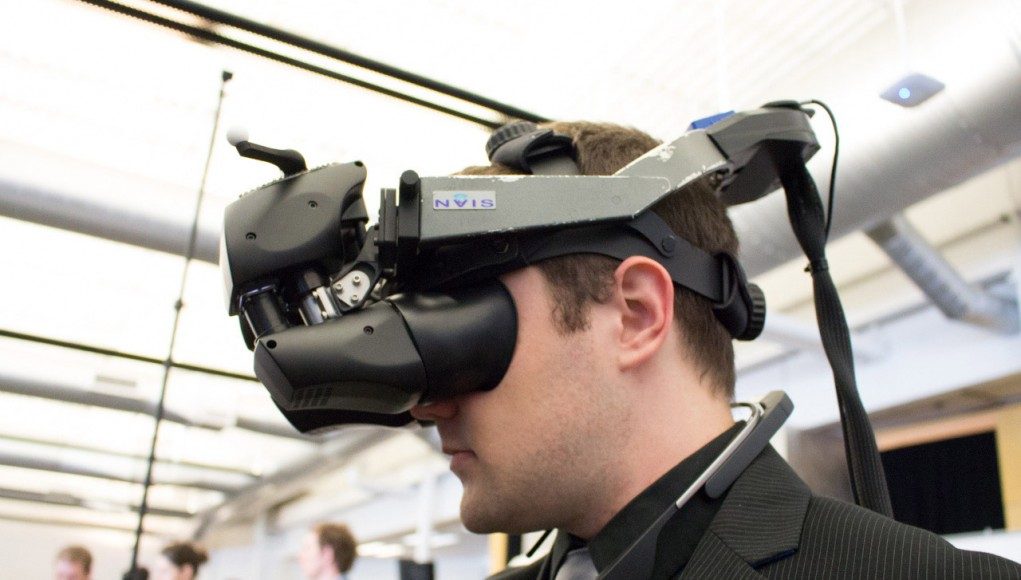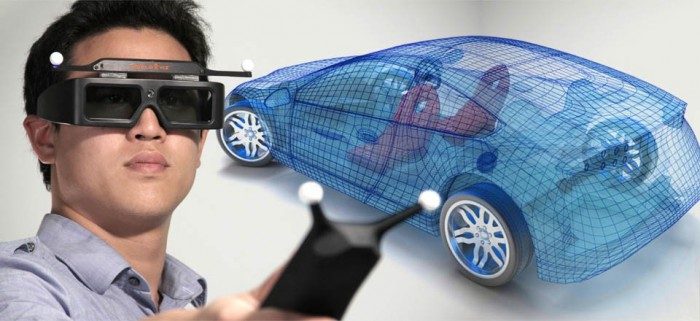Today WorldViz has announced that it received a “multimillion” dollar Series A investment from Intel Capital, the investment arm of the famed chip manufacturer. The company wouldn’t specify the exact amount, but says that the money will be used to “advance the development and distribution of WorldViz’s virtual reality applications for the enterprise.”
As far as the startup world goes, WorldViz is a bit old for a Series A. Founded in 2002, the 13 year old company is well established in the professional VR space, and says they’ve deployed their VR technology to more than 1,500 companies, academic institutions, and government agencies, including Fortune 500s. Although VR has long existed in the enterprise space, it seems that the resurgence of consumer VR is opening doors across the entire ecosystem.
“Intel’s commitment to WorldViz is a strong statement that the enterprise virtual reality market is poised for rapid expansion and WorldViz is positioned to capture this growth,” said Andy Beall, CEO of WorldViz.
As the sole investor of the deal, it’s Intel’s policy not to specify the exact amount of an investment. When I asked WorldViz, they wouldn’t even narrow it down to millions, tens of millions, or even hundreds of millions. However, in 2014 Intel Capital invested $359 million in 125 deals, averaging $2.87 million per investment, which leads me to believe that the deal doesn’t reach into the category of tens of hundreds of millions.

WorldViz designs and deploys custom VR systems for enterprise based on client needs. The systems are powered by their own Vizard VR toolkit which creates virtual scenes that can be viewed and controlled with more than 100 supported motion input devices, VR headsets, 3D displays, CAVEs, haptic devices, eye trackers, and more, including their own ‘Precision Position Tracking‘ system, capable of tracking users in a space more than 150 feet squared, according to the company. Among their 1,500 clients is Stanford, who WorldViz helped to deploy the Virtual Human Interaction Lab.
I spoke with WorldViz CEO Andy Beall who told me that the proliferation of consumer VR has benefits for the professional space as well.
“For the majority of our past customers, one of the things on the bill of materials [for clients wanting to deploy a VR system] would be a $40,000 headset,” Beall told me. “If you look at modern headsets, it’s a big plus… that’s one less barrier for entry for budget. There’s enough press right now that there’s some uncertainty among buyers about timing—’should I wait six months?’—[now] when you’re talking to a business person it’s easy to say, ‘buy the $300 headset today and get the next one in six months!'”
Added recently to the impressive list of hardware supported by the company’s Vizard software are well known consumer devices like the Oculus Rift VR headset and the Razer Hydra motion input controller. The company has a freely available Demo Pack which you can used to step into experiences created with their software, should you have a Rift handy.
WorldViz shows and experience combining a DIY wireless version of the Oculus Rift DK1 with motion input hardware.
Although their software supports consumer hardware, WorldViz plans to focus primarily on growth in the enterprise space where one of the key challenges is getting complex models and data into virtual reality.
“[Virtual reality is] a really fast changing field and that’s why for the first time we decided to consider funding; we need to strengthen and deepen our ties into business and solve the content workflow issues right now,” Beall told me. “Because really I think whoever nails that will be serving the customer needs the best and the fastest. The bottleneck for business users is getting their work into a virtual experience in hours instead of a months.”
And once the content is virtualized, the next major challenge is telling the computer which devices should be responsible for viewing and controlling it.
“Let’s say I want to have my viewpoint and I have two controllers and I want to see my hands, and it’s all different devices. Then I want to be able to fly around [the virtual space] and I want to be able to walk around the physical space, and have the cave update correctly for my perspective, but I also want to be able to navigate within the virtual space,” Beall said as he walked me through an example of how complicated control across a broad array of devices can become. “Now I may want to have my virtual viewpoint leave my physical viewpoint and follow an animation path. When you add all of those elements, it’s easy to hit a limitation or, if you’re trying to dive down to your underlying coding, to just get buried in the math. I think we’ve tackled this and accomplished it better than anyone has for the breath of devices we’re supporting,” he continued.
Even with enterprise as the focus, as consumer VR becomes easier to use for the everyday user the company is considering applying a bit of its expertise to such experiences.
“I think more and more people are going to want to sit down in SketchUp and create a model of their kitchen [for instance], so we’re toying with some ideas of making some viewers really easy to use and dangling those out for the consumer market to gain some visibility,” Beall said.
For Intel’s part, the investment in aligns with the company’s push toward ‘perceptual computing’, which aims to create more natural interactions between people and computers.
“Our investment in WorldViz is consistent with Intel’s strategy to advance natural computing experiences, including virtual reality technology,” said Gregory Bryant, vice president of Intel’s Client Computing Group and general manager of Desktop Client Platforms. “Enterprises have barely tapped the potential of virtual reality, and WorldViz has demonstrated both a technical and business vision to drive adoption of virtual reality in professional settings, anchored on Intel Architecture.”
Having hosted AltspaceVR at their CES 2015 booth and CCP’s Eve Valkyrie the year before that, Intel has been watching the growing virtual reality space closely over the last few years. It’s likely that this is just one of many VR investments to come from the company.








